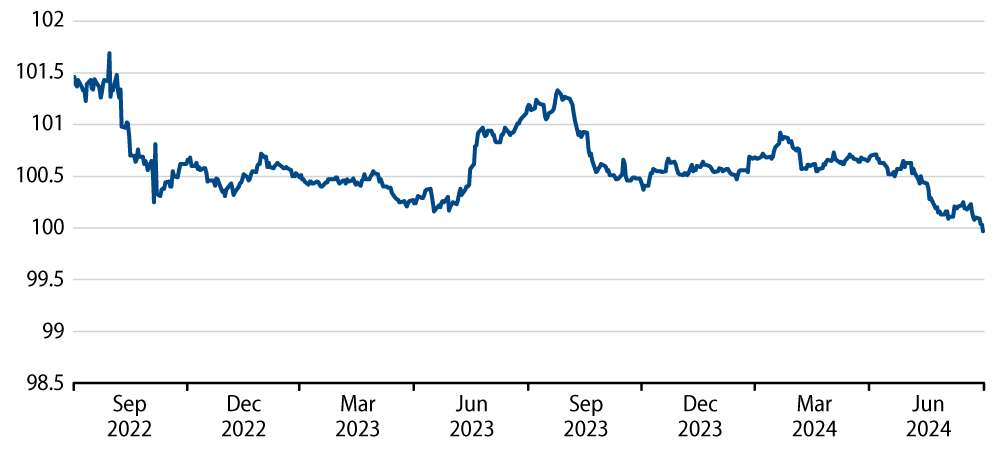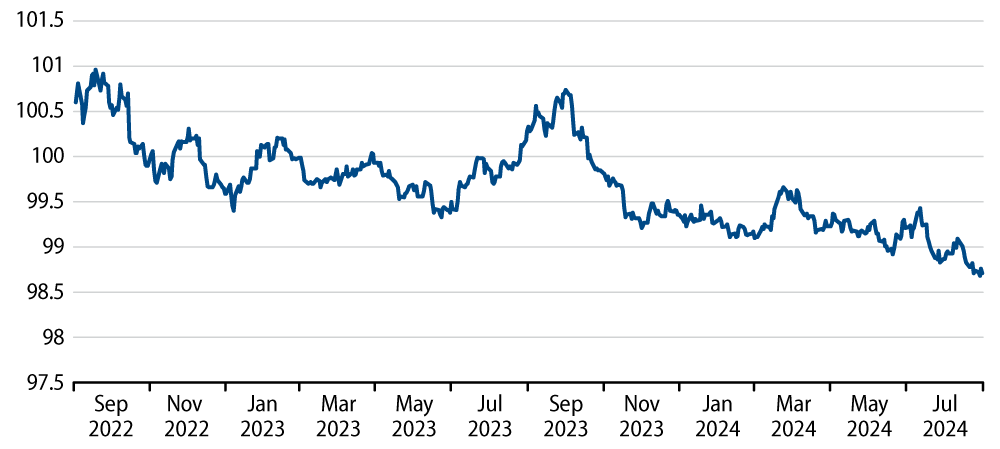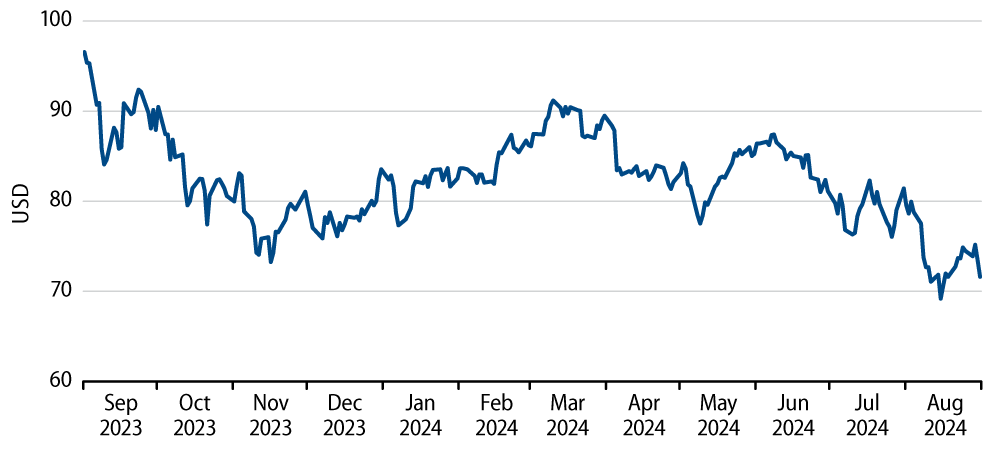Major central banks recently initiated rate-cutting cycles, the People’s Bank of China (PBoC) surprised investors with important stimulus measures, and Saudi Arabia signaled a commitment to regain market share in oil production. The confluence of these events supports the Western Asset base-case scenario and implies a marginal tailwind for slowing global economic activity—but even more so a positive shift for investor sentiment and ultimately asset prices.
First, major central banks have moved to relax monetary tightness given progress on inflation. With supply-side inflation bottlenecks largely resolved, inflation has drifted lower and central banks are pivoting away from tight monetary policy. At the same time, financial conditions remain relatively easy. The combination of accommodative financial conditions and central banks making progress in the battle against inflation provides a tailwind to the real economy, as well as to investor sentiment.


Second, Chinese authorities announced various fiscal, monetary, and macro prudential measures to provide support to an economy wrestling with deflationary pressures and confidence shocks brought on by the property sector meltdown and fallout from other government policies. The measures are the strongest to date but are likely aimed at putting a floor under the recent economic underperformance as opposed to a more comprehensive solution to cyclical and secular headwinds. Nevertheless, the measures have the potential to energize sentiment in the broader investor community while the true impact of the stimulus remains to be seen. Simply putting a floor under Chinese growth and taking off the table a more disruptive Chinese hard-landing scenario should be supportive of risk assets generally.
Third, recent media articles describe Saudi Arabia’s intent to pivot its oil production strategy. They point to a shift away from production cuts aimed at underpinning the price of oil to a strategy focused on regaining production market share by sacrificing the oil price level in the short term. Specifically, OPEC would aim to shake out price-sensitive producers such as American shale. Cheaper oil will not act as a headwind to global economic activity but will serve as a tailwind to further disinflationary pressures. Additionally, at the margin, a lower dollar price per barrel will reduce the demand for US dollars in international markets.

The combined impact of rate-cutting cycles coupled with easy financial conditions, PBoC stimulus, and cheaper oil should help offset cyclically slowing global activity. Additionally, and more significantly, in the short term the events will likely embolden investor sentiment, provide support to credit spreads and equities globally, and further cheapen an expensive US dollar. In summary, the environment that emerges when connecting these puzzle pieces supports Western Asset’s broader positioning as we are currently overweight duration, credit spreads, and emerging markets while underweight the US dollar.

